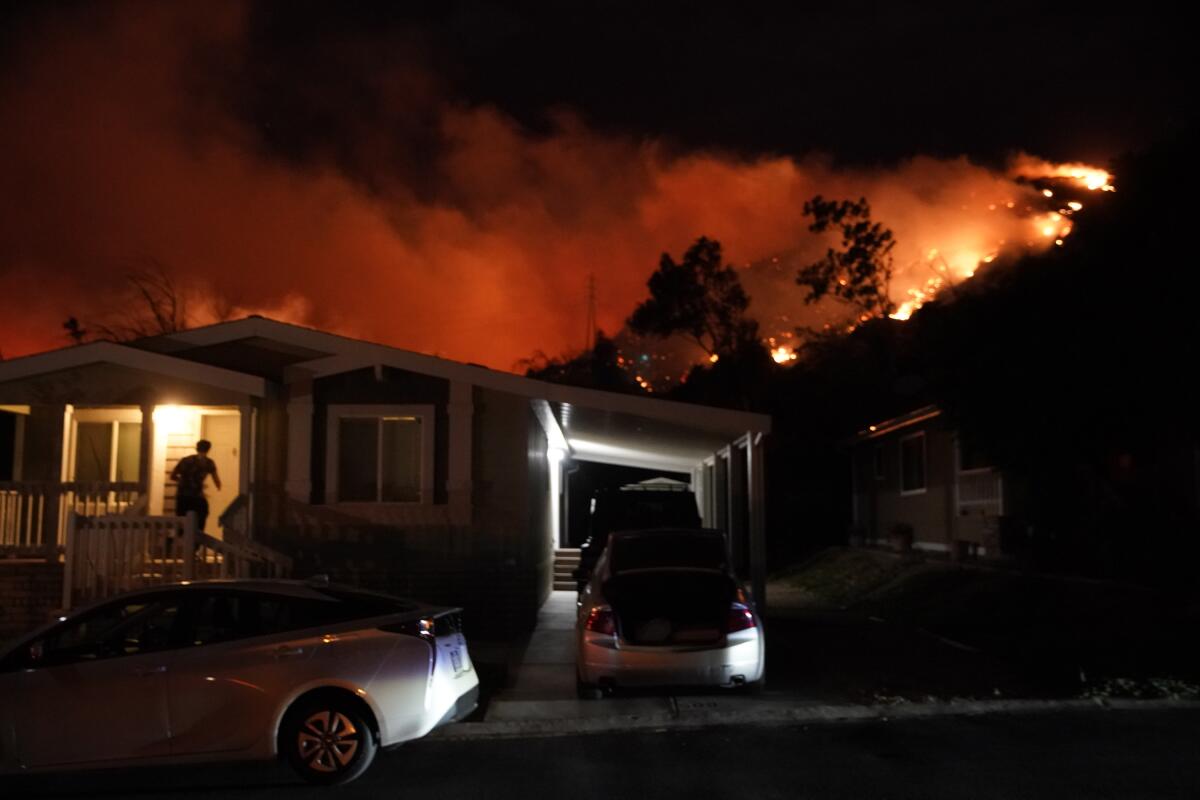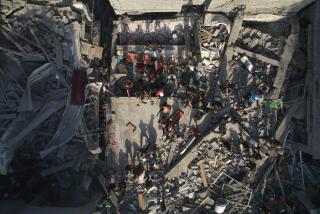What to pack if you might need to evacuate

When mandatory evacuation orders come, it’s time to hit the road.
Typically, you’ll have some advance notice from authorities that an evacuation is possible. At the first sign that you might have to evacuate, get your things ready.
“The earlier people leave, the better off they are,” said Jessica Kellogg, an emergency management coordinator with the city of Los Angeles Emergency Management Department. Leaving quickly once you’re ordered to evacuate means you have more time to get to safety, she said, and it helps firefighters keep roads clear of congestion.
In order to be prepared for any kind of emergency, you should have a “go bag” of supplies ready at all times. That means having all of these things together and packed up in one place where you could grab it and be out the door in minutes. In larger households, there can be one main “go bag” and additional, less comprehensive ones for each family member or housemate capable of managing one. If you are evacuating your home, there are a few more things you should pack. Here are some pointers.
Stay informed with alerts
The more time you have to prepare, the better. Sign up for your city or county’s alert system so you’ll get text updates about possible and mandatory evacuations.
For the city of Los Angeles, that’s Notify L.A. If you’re elsewhere in L.A. County, you can find your municipality’s alert system signup here. For other places, search “emergency alerts (your city or county)”.
What goes in the “go bag”
Any sturdy backpack or bag can be your “go bag.” What it is matters less than what’s in it. Pre-assembled kits are an option as well.
What goes into the “go bag”:
- Water and nonperishable food, along with utensils and a can opener
- A flashlight and extra batteries for it
- A first aid kit
- A fire extinguisher (there are smaller ones out there designed for cars and homes)
- Moist towelettes, garbage bags, toilet paper, and plastic ties for sanitation purposes (the moist towelettes will also come in handy for getting soot and ash off things)
- A whistle to signal for help
- A battery-operated or hand-crank radio
- A printed map of your area, in case GPS isn’t working or you have to look for an alternate route
Your “go bag” should also include the following items. In smaller or solo households, it might make sense to keep everything in one bag; for bigger families, these things might go into the individual “go bags.”
- Face masks (N95 and KN95 masks work better for smoke and air pollution than a cloth mask)
- Batteries and chargers for your phone and other portable devices
- Several days’ worth of clothing — including coats, pajamas, underwear, socks, and sturdy close-toed shoes
- A blanket or sleeping bag
- Comfort items and things to pass the time, such as stuffed animals, board games and books
Ready to go whenever — even in the middle of the night
You should keep your “go bag” under or close to your bed. But if you don’t have space for it all, at minimum you need a “by-the-bed” kit: A flashlight, a pair of hard-soled shoes and a pair of glasses or contact lenses if you wear them. Keep these in your nightstand or somewhere else close to where you sleep. That way, if disaster strikes in the middle of the night, you’re capable of safely moving through a dark and potentially hazardous house.
“The most important thing is sturdy shoes. Don’t evacuate the house in flip-flops or Uggs,” Kellogg said. “You want to make sure your ankles are secure and your toes are covered.”
Everything else: The 6 Ps
On top of what’s in your go bag, have what emergency preparedness experts call “the 6 Ps” standing by and ready to go when there’s a chance you may need to evacuate. Here is the list:
1) People and pets: All the living creatures in your house.
2) Papers and phone numbers: This includes vital documents like birth certificates, passports, vaccination records and insurance information, as well as a list of essential phone numbers. Your phone battery could die or cell service may be unavailable when you’re on the road — a suboptimal time to realize you don’t know the phone number of the place you’re headed. Have phone numbers for family members, friends, a boss or coworker, your doctor, your veterinarian or pediatrician if applicable, an out-of-state contact, your lawyer, your insurance agent, your landlord, and whatever destination you’ll have in mind when you evacuate, like a hotel or a designated evacuation site.
3) Prescriptions: Your pill bottles, yes, but also things like eyeglasses, contact lenses and other health-related items you might need — think vitamins, toothbrush and toothpaste, feminine hygiene supplies, contact-lens solution. If you’re evacuating with infants or toddlers, make sure to include diapers and wipes. The first-aid kit in your go bag should have standard supplies, but double-check that you’ve got bandages and gauze, medical tape, antibiotic cream, antacids, anti-diarrhea medications, antihistamines, and over-the-counter pain relievers.
4) Pictures and personal items: This category includes all the things you couldn’t stand to lose. Pack up photo albums, framed photos, memorabilia and heirlooms, video game consoles, musical instruments, plants, and jewelry. Anything is OK as long as it won’t delay your evacuation to pack them or take up space in the car that you need for more vital supplies (with apologies to your vintage midcentury dining room set and Peloton).
5) Personal computers: Most of our lives are on computers, so make sure yours goes into the car. If you don’t want to haul a whole desktop PC with you, Kellogg recommends storing copies of vital documents in the cloud or on a flash drive.
6) Plastics: This is your ID, credit and debit cards, and cash.
The best time to prepare for an emergency is before an emergency happens. Add a note to your next weekend to-do list to work on things you might not already have, like a written list of essential phone numbers and a backup flash drive of your vital documents. You should make sure your “go bag” is complete and start packing up your 6 Ps as soon as fire danger is known to be in your area.
More to Read
Sign up for Essential California
The most important California stories and recommendations in your inbox every morning.
You may occasionally receive promotional content from the Los Angeles Times.











